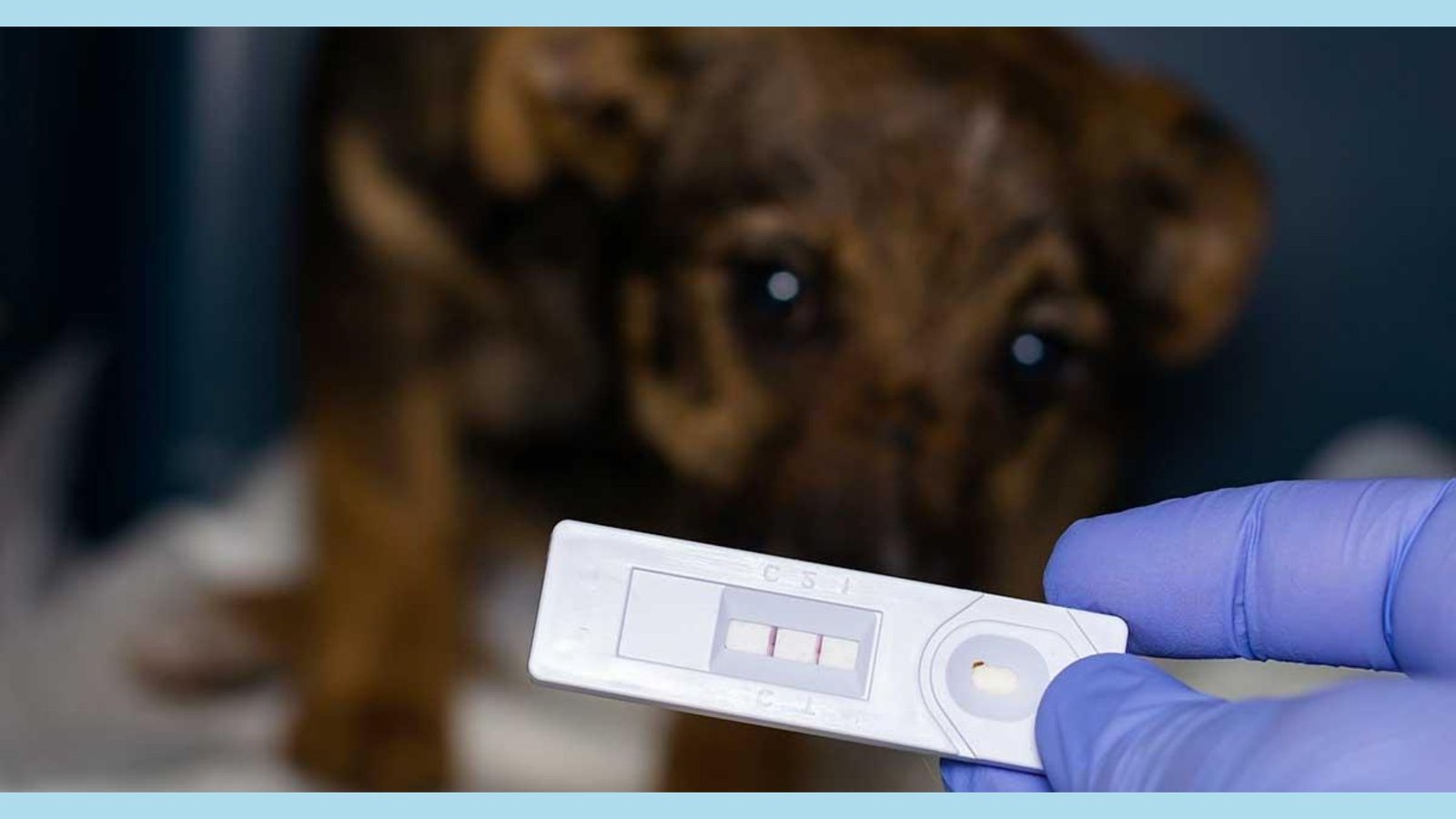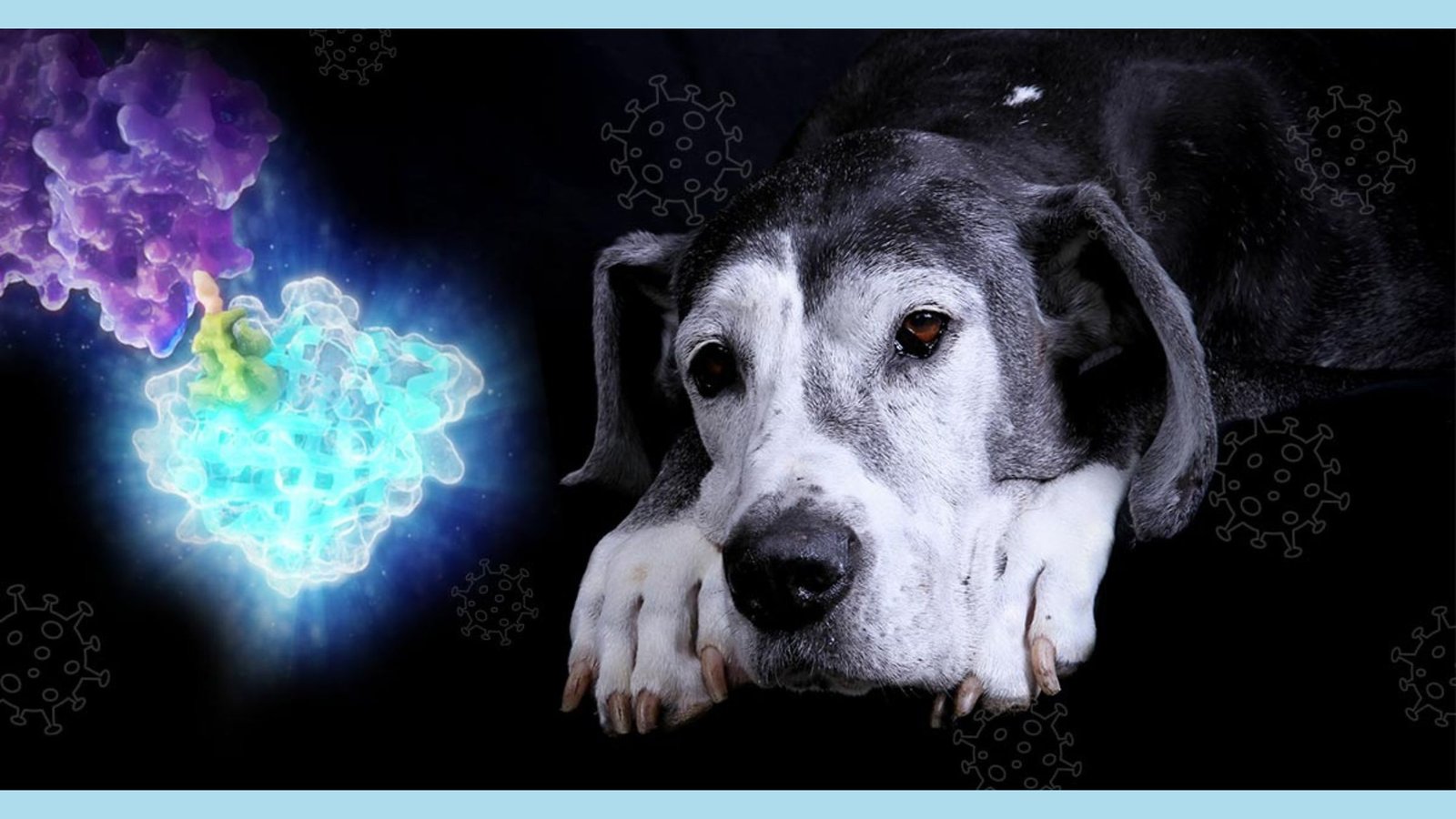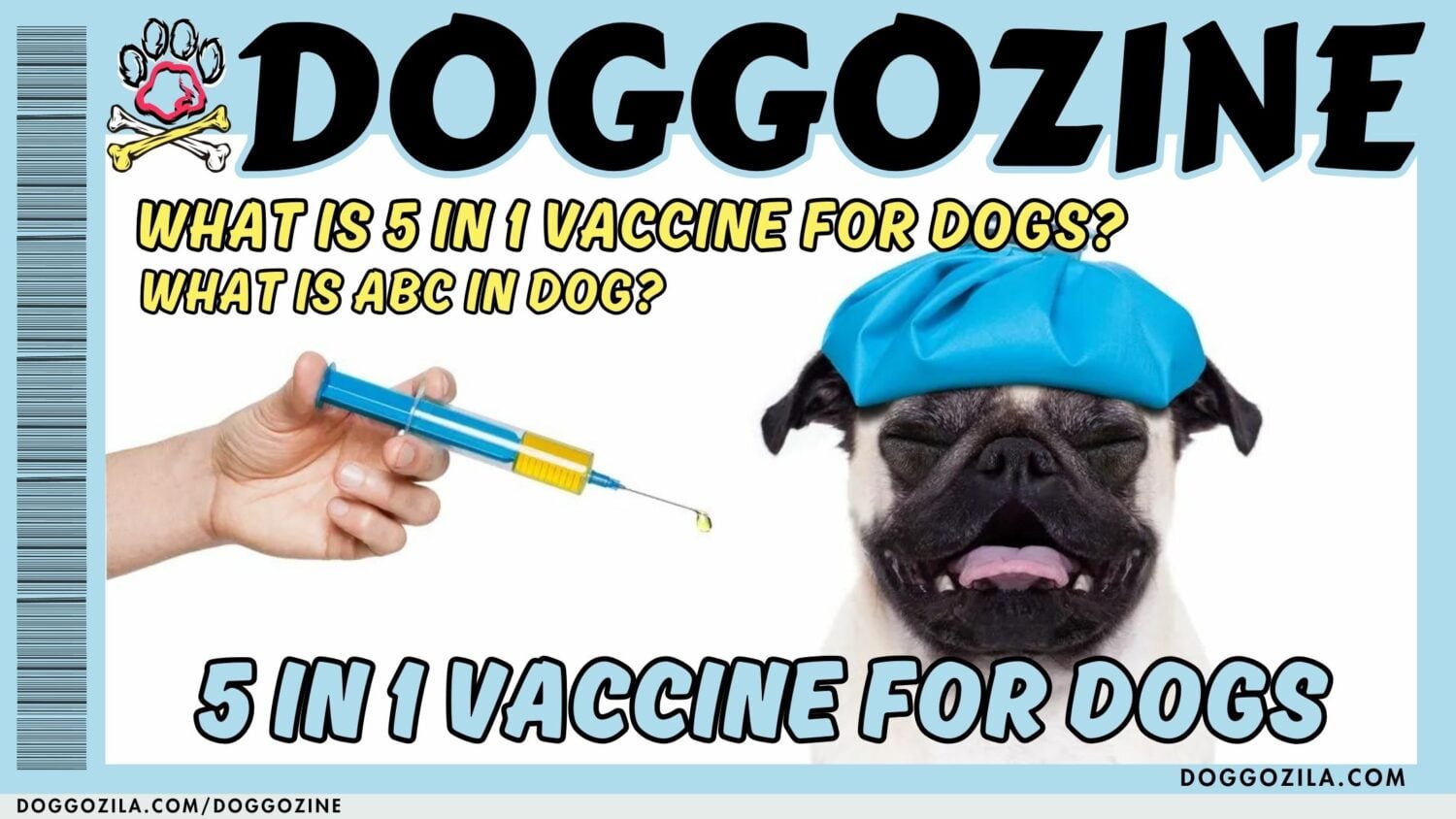
PREVENTION AND TREATMENT OF MOST COMMON DOG DISEASES
As a dog owner, it is important to be aware of the common diseases that can affect our furry friends. Understanding these diseases, their symptoms, and how to prevent or treat them is crucial for maintaining the health and well-being of our beloved pets. In this article, we will explore some of the most common dog diseases and discuss preventive measures and treatment options.
We choose and made a list of the top 5 most common dog diseases and how to help your dog if someday you see some of the symptoms noted in this article.

UNDERSTANDING CANINE PARVOVIRUS: CAUSES, SYMPTOMS, AND PREVENTION
Canine Parvovirus, commonly known as Parvo, is a highly contagious viral disease that primarily affects dogs, especially puppies. This devastating illness spreads rapidly through direct contact with infected dogs or contaminated environments. Understanding the causes, symptoms, and prevention measures is crucial for dog owners and veterinary professionals alike.
What Are The Causes of The Common Dog Diseases Like Canine Parvovirus?
Canine Parvovirus is caused by the Parvovirus CPV-2, a highly resistant virus that can survive in the environment for months or even years. The virus is shed in the feces of infected dogs and can contaminate the surroundings, including soil, grass, water bowls, and even clothing or shoes. Dogs can contract the virus by coming into direct contact with infected animals or by ingesting the virus from contaminated surfaces.
What Are The Symptoms of The Common Dog Diseases Like Canine Parvovirus?
The symptoms of Canine Parvovirus can vary in severity, but they generally include:
- Severe diarrhea, often bloody
- Dog Vomiting
- Lethargy and weakness
- Loss of appetite
- Dehydration
- Fever
- Abdominal pain or discomfort
It is important to note that not all dogs infected with Parvovirus will display all of these symptoms. Puppies, especially those between 6 weeks and 6 months old, are particularly vulnerable to the virus and may exhibit more severe symptoms.
Parvovirus Diagnosis and Treatment
If you suspect your dog may have Canine Parvovirus, it is crucial to seek veterinary care immediately. A veterinarian will perform a physical examination and may recommend additional tests, such as a fecal test or blood work, to confirm the diagnosis.
So unfortunately, until this day there is no specific cure for Canine Parvovirus yet. Treatment primarily focuses on supportive care to manage symptoms and prevent complications.
This may include:
- Intravenous fluid therapy to combat dehydration
- Anti-nausea medication to control vomiting
- Antibiotics to prevent secondary bacterial infections
- Pain medication to alleviate discomfort
It is important to follow the veterinarian’s instructions carefully and provide a calm and clean environment for the dog’s recovery. Dogs with Parvovirus require close monitoring and may need to be hospitalized for intensive care.
Prevention of Canine Parvovirus
Preventing Canine Parvovirus is essential to safeguard the health of dogs, especially puppies.
Here are some key prevention measures:
- Vaccination: Ensure that your dog receives the necessary vaccinations, including the Parvovirus vaccine. All puppies should receive their vaccinations starting usually at 6-8 weeks of age.
- Isolation: Keep puppies and unvaccinated dogs away from potentially infected animals or environments until they are fully vaccinated.
- Hygiene: Practice good hygiene by regularly cleaning and disinfecting your dog’s living area, food bowls, toys, and any other items that come into contact with dogs.
- Limit exposure: Avoid areas where Parvovirus outbreaks have been reported, such as dog parks or kennels with a history of the disease.
- Consult your veterinarian: If you are unsure about any aspect of your dog’s health or vaccination status, consult your veterinarian for guidance.
Brief Summary on Canine Parvovirus from the Common Dog Diseases
Canine Parvovirus is a highly contagious and potentially life-threatening disease that primarily affects dogs, particularly puppies. Understanding the causes, symptoms, and prevention measures is crucial for dog owners to protect their pets from this devastating illness. By following proper vaccination protocols and practicing good hygiene, we can help prevent the spread of Canine Parvovirus and ensure the well-being of our furry companions.

UNDERSTANDING DISTEMPER IN PUPS: IDENTIFYING SIGNS AND HOW IT SPREADS
Distemper is a serious illness that affects all dogs. It spreads easily from pup to pup. The virus targets the lungs, stomach, and brain, causing varied symptoms. Some dogs get very sick. In this article further we’ll discuss distemper signs and how it travels.
Distemper Symptoms in Pups
The signs differ based on the disease stage and the pup’s immune response.
Watch out for these common indicators:
- High temperature: Distemper often brings fevers. Pups may shiver or feel sluggish.
- Persistent coughing: A dry, phlegmy cough can signal distemper.
- Runny nose: The discharge starts clear but may turn thick and yellow.
- Vomiting and diarrhea: Distemper disturbs the stomach and intestines. Stools smell bad.
- Neurological issues: In some cases, the virus impacts the nervous system. Seizures, twitches, imbalance, or paralysis can occur.
Not every infected pup shows all these symptoms. Some have mild signs while others get severely ill.
How Dogs Catch Distemper
Distemper in dogs spreads mainly through close contact with infected pups. The virus gets out in body fluids like snot, drool, pee, and poop.
These are the usual ways dogs get Distemper:
- Direct touch: Dogs can get it by being close to sick dogs. This can happen when they sniff, lick, or share food and water bowls.
- Airborne spread: The virus can also float in the air when an infected dog coughs or sneezes. So, dog parks, kennels, and shelters pose high risks.
- Tainted things: Distemper can live for a while on surfaces like toys, bedding, and clothes. If a healthy dog touches these contaminated objects, it can catch the virus.
Remember, Distemper can’t infect humans or most other animals. But some critters like ferrets and raccoons can get it too.
Stopping and Treating Common Dog Diseases Like Distemper
Preventing Distemper is key to keeping your pup healthy. The best way is always through vaccination. Pups should get their first shot around 6-8 weeks old, then boosters. Adult dogs need regular vaccinations too to stay immune.
Along with getting your pup vaccinated, keeping good hygiene and avoiding sick animals can help lower the chance of Canine Distemper.
Here are some tips to prevent it:
- Isolation: If your dog has Canine Distemper, keep them away from other dogs so the virus doesn’t spread.
- Cleanliness: Clean and disinfect your dog’s living space, toys, and anything they touch regularly.
- Steer clear of risky areas: If there’s an outbreak in your area, don’t go to dog parks or pet stores.
There’s no cure for Canine Distemper. Treatment just manages symptoms and supports the dog. This may include meds for fever, antibiotics for infections, and fluids for dehydration. See the vet if you think your pup has Canine Distemper. They can diagnose and plan the right treatment.
A Quick Overview About Canine Distemper of The Common Dog Diseases
Canine Distemper is a highly contagious viral disease that can have serious consequences for dogs. Recognizing the symptoms and understanding how the virus is transmitted is crucial for prevention and early intervention. By vaccinating your dog, practicing good hygiene, and minimizing exposure to infected animals, you can help protect your furry friend from this potentially deadly disease.

WHY UNDERSTANDING LYME DISEASE IN DOGS IS VERY IMPORTANT?
Lyme Disease is a common tick-borne illness that affects both humans and dogs. It is caused by the bacterium Borrelia burgdorferi and is primarily transmitted through the bite of infected ticks. In this article, we will discuss the symptoms, diagnosis, treatment, and prevention of Lyme Disease in dogs.
Symptoms of Lyme Disease in Dogs
When any dog is infected with Lyme Disease, they usually may exhibit a range of symptoms.
These symptoms can vary from mild to severe and may include:
- Fever
- Lameness
- Joint swelling
- Lethargy
- Loss of appetite
In some cases, dogs may also experience swollen lymph nodes, difficulty breathing, and kidney problems. It’s important to note that not all dogs infected with Lyme Disease will show symptoms, making it essential to regularly check for ticks and monitor your dog’s health.
How to Diagnose Lyme Disease in Dogs?
If you suspect that your dog may have Lyme Disease, it is crucial to consult with a veterinarian for a proper diagnosis. The veterinarian will typically perform a physical examination and may recommend various tests, including blood tests, to confirm the presence of the bacteria.
It’s important to note that a positive test result does not necessarily mean that your dog is currently experiencing symptoms or requires treatment. The veterinarian will consider the test results alongside the dog’s clinical signs and medical history to make an accurate diagnosis.
What Are The Treatment Options for Lyme Disease in Dogs?
Once diagnosed with Lyme Disease, your veterinarian will recommend an appropriate treatment plan for your dog. The primary treatment for Lyme Disease in dogs is the administration of antibiotics. The duration of treatment will depend on the severity of the infection and the response to medication.
It’s crucial to follow the veterinarian’s instructions regarding the dosage and duration of the antibiotic treatment. In most cases, a full course of antibiotics is necessary to ensure the complete eradication of the bacteria from the dog’s system.
In addition to antibiotics, your veterinarian may also prescribe medications to alleviate specific symptoms such as pain or joint inflammation. It’s important to provide your dog with a comfortable and supportive environment during the treatment period.
How To Prevent Lyme Disease in Dogs?
Prevention is key when it comes to Lyme Disease in dogs.
Here are some measures you can take to reduce the risk of your dog contracting the disease:
- Every day check your dog for ticks, especially when you come back home after outdoor activities in wooded or grassy areas.
- Always use the tick prevention products recommended by your veterinarian, such as topical treatments or tick collars.
- Keep your yard clean and free of tall grass and brush, as these areas provide a favorable environment for ticks.
- Consider vaccination against Lyme Disease. Consult with your veterinarian to determine if the vaccine is appropriate for your dog based on their lifestyle and location.
Taking steps to prevent Lyme Disease protects your dog from this serious illness. It greatly reduces the risk of contracting tick-borne diseases.
Common Dog Diseases Summary: Lyme Disease in Dogs
Lyme Disease is a severe tick-borne sickness affecting all dogs. Spotting symptoms, seeking vet care promptly, and following treatment fully are vital. Using tick prevention products and checking for ticks regularly minimizes Lyme risk. Consult your vet for guidance on Lyme Disease and pet health.

WHAT ARE THE SIGNS OF KENNEL COUGH SPREADING IN DOGS?
Kennel Cough is a highly contagious dog respiratory disease. It spreads easily where dogs gather like boarding facilities, parks, and grooming salons. This post explains Kennel Cough symptoms and transmission.
What is Kennel Cough?
Kennel Cough infects dogs’ respiratory systems. Viruses and bacteria like canine parainfluenza virus and Bordetella bronchiseptica bacteria cause it. These pathogens inflame and irritate the trachea and bronchi lining.
Symptoms of Kennel Cough
The most common symptom of Kennel Cough is a persistent cough. It is often described as a dry, hacking cough that sounds like the dog is trying to clear its throat.
Other symptoms may include:
- Sneezing
- Nasal discharge
- Mild fever
In some cases, dogs with Kennel Cough may also experience loss of appetite and lethargy. However, it is important to note that the severity of symptoms can vary depending on the individual dog and the specific pathogens involved.
How is Kennel Cough Spread?
Kennel Cough is highly contagious and can spread easily from one dog to another. The disease is primarily transmitted through the air when an infected dog coughs or sneezes. The pathogens can also be present on surfaces such as food and water bowls, toys, and bedding.
When a healthy dog comes into contact with the infected respiratory secretions or contaminated surfaces, they can inhale the pathogens and become infected. It is important to note that Kennel Cough can affect dogs of all ages and breeds, although puppies and older dogs may be more susceptible due to their weaker immune systems.
How to Prevent Kennel Cough in Dogs?
While Kennel Cough is highly contagious, there are steps that can be taken to prevent its spread:
- Vaccination: Vaccinating your dog against Kennel Cough is one of the most effective ways to prevent the disease. The vaccine is usually administered through the nose or as an injection and provides protection against the most common pathogens.
- Keep your pup’s stuff clean. Wash their bowls, toys, and beds often with soap and water. Don’t share these items with other dogs, especially if one is sick.
- Steer clear of crowded doggy spots. Avoid dog parks and kennels if Kennel Cough is spreading nearby. Wait until it’s safe before going again.
- Keep sick pups apart. If your dog has Kennel Cough symptoms, keep them away from other dogs. Ask your vet how to care for your ill pup.
How To Treat Common Dog Diseases Like Kennel Cough?
Most times, Kennel Cough clears up on its own without treatment. But you’ll want to make your dog comfy and prevent other issues.
You can try:
- Rest time. Let your dog relax and skip strenuous play that might make them cough more.
- Humidifier. Moist air can soothe their irritated throat and lungs. Run a humidifier or let them sit in a steamy bathroom.
- Cough meds. Your vet may give you cough suppressants to provide relief.
- Antibiotics. If a bacterial infection is suspected or symptoms
See your vet again if your dog’s not getting better or seems worse. They may need further treatment or tests.
A Quick Overview on Kennel Cough from The Most Common Dog Diseases
Kennel Cough is a highly contagious respiratory disease that can affect dogs of all ages and breeds. Recognizing the symptoms and understanding how the disease spreads is crucial in preventing its transmission. By practicing good hygiene, vaccinating your dog, and taking appropriate precautions in crowded areas, you can help protect your furry friend from this common canine ailment.

UNDERSTANDING CANINE LEPTOSPIROSIS: CAUSES, SYMPTOMS, AND PREVENTION
Canine leptospirosis is a bacterial disease that can have serious consequences for dogs and other animals. It is caused by the Leptospira bacteria and can be transmitted through contact with the urine of infected animals, contaminated water, or soil. Further in this article, we will explore the causes, symptoms, and prevention of this disease to help you better understand and protect your furry friends.
What Are The Causes of Canine Leptospirosis?
The Leptospira bacteria are typically found in the urine of infected animals, including rats, mice, raccoons, and livestock. Dogs can become infected when they come into contact with the urine of these animals, either directly or indirectly. All the contaminated water and soil can also serve as sources of infection.
Leptospirosis is more common in areas with warm and humid climates, as the bacteria thrive in these conditions. It can also be more prevalent in urban areas with a high population of rats and other rodents.
What Are The Symptoms of Canine Leptospirosis?
The symptoms of canine leptospirosis can vary depending on the severity of the infection. Some dogs may show no symptoms at all, while others may experience a range of signs that can be mistaken for other illnesses.
Common symptoms of canine leptospirosis include:
- Fever
- Lethargy
- Loss of appetite
- Vomiting
- Diarrhea
- Jaundice (yellowing of the skin and eyes)
In severe cases, dogs may also experience kidney or liver failure, which can be life-threatening if not treated promptly.
How To Diagnose Common Dog Diseases Like Canine Leptospirosis?
If you suspect that your dog may have leptospirosis, it is important to seek veterinary care as soon as possible. The veterinarian will perform a thorough physical examination of your dog and may recommend additional tests to confirm the diagnosis.
Common diagnostic tests for canine leptospirosis include:
- Blood tests: These can detect the presence of Leptospira antibodies or the bacteria itself.
- Urine tests: These can help identify the specific strain of Leptospira bacteria.
- PCR tests: Polymerase chain reaction (PCR) tests can detect the DNA of the bacteria.
Early diagnosis is crucial for effective treatment and to prevent the spread of the disease to other animals or humans.
What is The Best Treatment for Canine Leptospirosis?
Once a diagnosis of leptospirosis is confirmed, your veterinarian will develop a treatment plan tailored to your dog’s specific needs. Treatment typically involves a combination of antibiotics, fluid therapy, and supportive care. Antibiotics are used to eliminate the bacteria from the body, while fluid therapy helps to maintain hydration and support kidney function.
In really severe cases, dog hospitalization will be necessary for intensive care and further monitoring. It is important to follow your veterinarian’s instructions and complete the full course of antibiotics to ensure that the infection is fully cleared.
How To Prevent Canine Leptospirosis?
Prevention is key when it comes to canine leptospirosis.
Check some of these measures that you can take to protect your dog:
- Vaccination: Talk to your veterinarian about vaccinating your dog against leptospirosis. Vaccines are available for the most common strains of the bacteria and can help reduce the risk of infection.
- Minimize exposure: Avoid letting your dog come into contact with standing water, especially in areas where leptospirosis is known to be prevalent. Keep your dog away from areas frequented by wildlife or rodents.
- Proper hygiene: Wash your hands thoroughly after handling your dog, especially if they have been in contact with urine or other bodily fluids.
- Regular check-ups at the vet: You should schedule regularly vet check-ups to monitor your dog’s health and catch any potential issues early as prevention is the key.
Common Dog Diseases Summary About Canine Leptospirosis
Canine leptospirosis is a bacterial disease that can pose a threat to dogs and other animals. If you understanding the causes, symptoms, and prevention methods, could help you to protect your dogs from this potentially serious illness. If you suspect that your dog may have leptospirosis, it is important to seek veterinary care promptly for proper diagnosis and treatment.
By taking preventive measures and staying vigilant, you can help keep your dog safe and healthy. The most frequent health issues in dogs were covered. Knowing the causes, signs, and ways to avoid them is useful. The goal is to assist at least one pup when pet parents read this!









